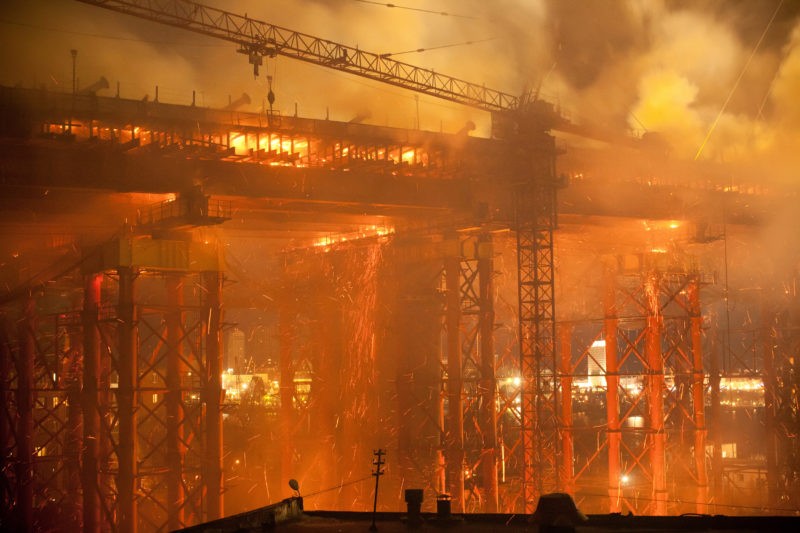Construction
How to prevent fire spreading on construction sites

Safety device specialists Bull has issued advice on how to prevent fires from spreading on construction sites.

Every year, there are many fires on construction sites and in buildings undergoing refurbishment.
Often workers are injured, and property is destroyed, causing unexpected costs which businesses many never recover from.
Implementing the correct fire safety products is crucial to prevent a fire from spreading and fire extinguishers are one of the most life-saving products that you can have on site. Fire extinguishers should be located at identified fire points around the site and should be appropriate to the nature of the potential fire:
- Wood, paper and cloth – water extinguisher;
- Flammable liquids – dry powder or foam extinguisher;
- Electrical – carbon dioxide (C02) extinguisher.
Consider how to detect fires
On a smaller site, a standalone alarm unit may be sufficient but as a construction site grows, there is a higher risk of a fire breaking out. By installing fire detection and wireless alarm systems, you can ensure workers are alerted in the event of a fire.
Carry out thorough staff training
It is so important to ensure staff are confident when using any type of fire safety equipment – they need to know what risks to be aware of and what actions to take in the event of a fire. All new employees should also receive fire safety training.
Review and update your risk assessment
According to The Regulatory Reform (Fire Safety) Order 2005 (FSO), a ‘responsible person’ must carry out, and keep up to date, a risk assessment and implement appropriate measures to minimise the risk to life and property from fire.
Health and Safety Executive (HSE) recommends following these five steps when carrying out a fire risk assessment:
- Identify hazards: consider how a fire could start and what could burn;
- Identify those at risk: employees, contractors, visitors and anyone who is vulnerable;
- Evaluation and action: consider the hazards and people identified in 1 and 2 and act to remove and reduce risk to protect people and premises;
- Record, plan and train: keep a record of the risks and action taken. Make a clear plan for fire safety and ensure that people understand what they need to do in the event of a fire;
- Review: your assessment regularly and check it takes account of any changes on site.
Bull Products recently revealed that more than 60,000 of its Cygnus Wireless Alarm Systems have been installed in construction sites around the world.
Fire Safety in 2023 eBook
SHP's sister site, IFSEC Insider has released its annual Fire Safety Report for 2023, keeping you up to date with the biggest news and prosecution stories from around the industry.
Chapters include important updates such as the Fire Safety (England) Regulations 2022 and an overview of the new British Standard for the digital management of fire safety information.
Plus, explore the growing risks of lithium-ion battery fires and hear from experts in disability evacuation and social housing.
How to prevent fire spreading on construction sites
Safety device specialists Bull has issued advice on how to prevent fires from spreading on construction sites.
Jamie Hailstone
SHP - Health and Safety News, Legislation, PPE, CPD and Resources Related Topics
Hundreds of workplace buildings to be inspected for safety this week
Legal insight: Common errors in fire safety
Workers facing uncertain future coupled with health and safety risks, new IOSH report says


